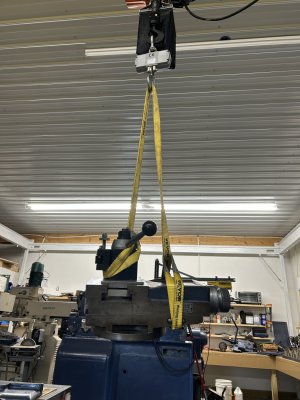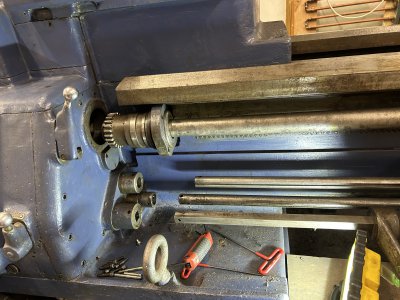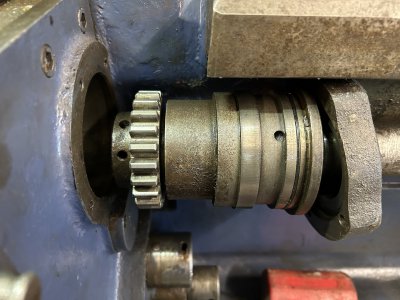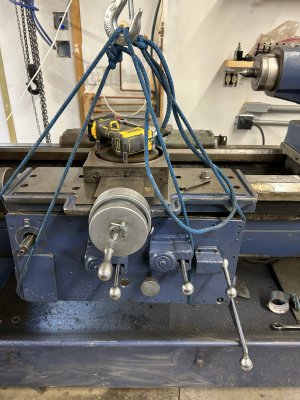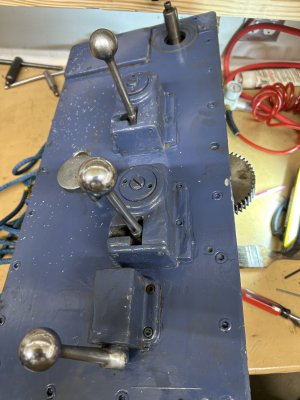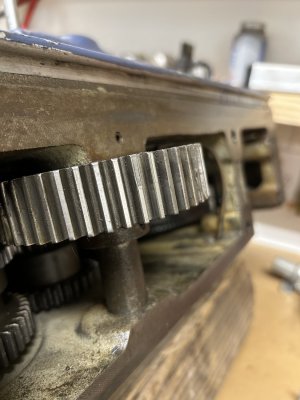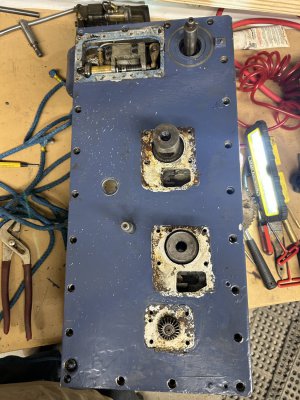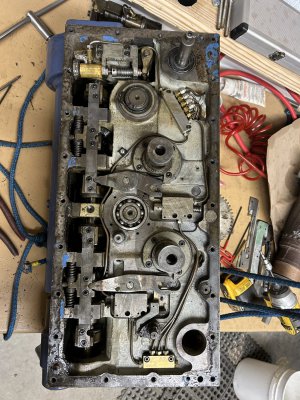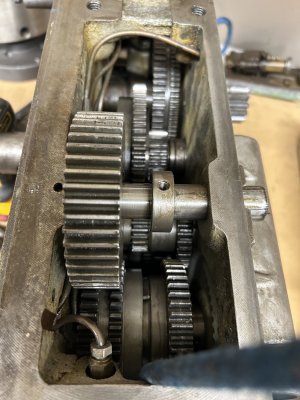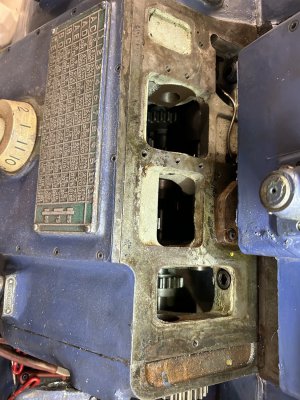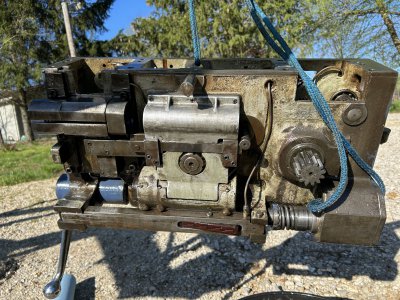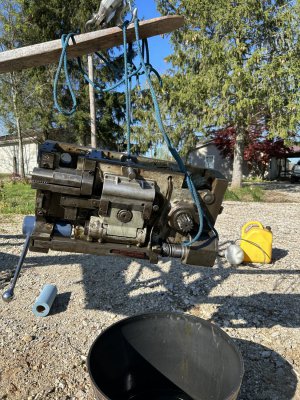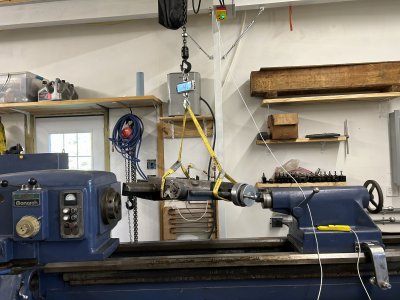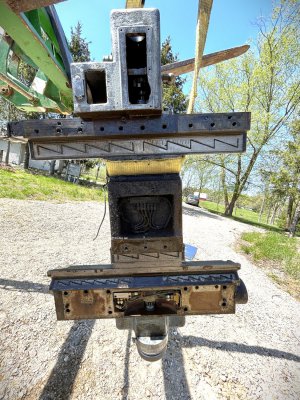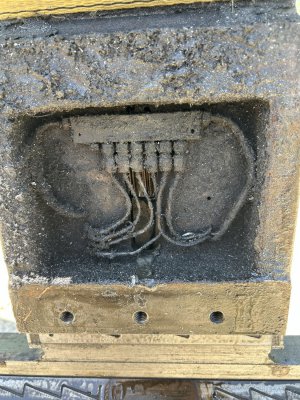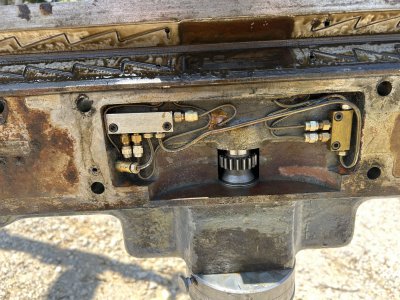Ok, guess I'll resurrect this 18 month old thread rather than random posts in
What did you do/buy today? threads. I've jumped back onto this project now that I have a working overhead crane. I said working, not "completely finished". After all, this is a hobby, not a career.
The compound has been partially scraped, and internals cleaned up significantly, including removing the grease from the oil passages. There is a clear placard by the grease fittings that says something along the lines of
Use Sunoco 80 Way oil, never the less, the zerks had obviously seen much and varying types of grease. WD-40, with the small straw, actually works pretty good for dissolving and blowing out old grease from those drilled passages. Assembly/casting that is on the right held an electromagnetic clutch for a tracer assembly associated with the cross slide. As mentioned in the "today" threads, I've removed the clutch assembly. New bearings on the left to hold the back end of the leadscrew in that casting.
Interestingly this cross-slide leadscrew is 0.4" per rev (2.5 TPI). My other Monarch is 0.5" per rev, so I've gotten use to two turns per inch. Hopefully since this is less it won't cause a real problem.
View attachment 486101
New for this post, I've also found the old oil pump that sat in the bottom of that casting. The pump was driven by the drive motor associated with the clutch and cross-slide leadscrew. With the motor gone and the clutch gone, nothing to operate the pump plunger, but I'm considering a handle or crankshaft to do that in lieu of buying a one-shot oiler and mounting it there. I believe that pump was responsible for oiling the carriage, but am not sure. There is also a pump in the apron, so I don't know for sure which pump handles what.
The carriage oil distribution system is mostly routed on the underside of the carriage. If you open this picture and look really close at the slot in the midde of where the cross-slide sits you can see a few oil lines going in/out of a manifold. I'm going to have to pull he carriage to really get at it and clean that up, and make sure it is working. Up to now I've been manually applying oil to the ways on the few times I've used this lathe. With the crunchy bearings, old grease, and the clutch system sort of attached, it made for a workout operating the cross slide. At least the carriage has power rapids. The compound before clean up was not really useable for cutting.
Anyway, going to have to pull the carriage off. I'm pondering possible ways to support the apron without the carriage so that I don't have to remove the bed leadscrew and various shafts, although I may need to do that anyway as the carriage clamps under the bed may not be feasible to remove with the apron in place.
View attachment 486102
Optimistically, I went ahead and ordered a new DRO from DRO Pros for this lathe. Getting a 2-axis EL-400, same as my other lathe. Another pricey purchase but I'm getting old enough I like the idea of identical buttons/layout/functionality across the two lathes' DROs. I had actually purchased a TouchDRO adapter, but I just can't get behind the idea of that many features. I'm a bit biased to KISS, and my older eyes don't like reading dynamic menus, leaning in across a spinning workpiece to squint at small fonts triggers my safety paranoia. Thinking I'll save the TouchDRO and use it on a mill project in the works. Extra features on a mill seems more practical there, for me. Just my opinions and reasoning, not trying to change anyone else's mind.


